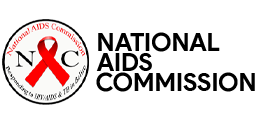What is Your Risk?
The reality is that anyone can get HIV. Therefore, it is important to know how you can get the virus. You can get HIV:
- By having unprotected sex- sex without a condom- with someone who has HIV. The virus can be in an infected person’s blood, semen, or vaginal secretions and can enter your body through tiny cuts or sores in your skin, or in the lining of your vagina, penis, rectum, or mouth.
- By sharing a needle and syringe to inject drugs or sharing drug equipment used to prepare drugs for injection with someone who has HIV.
- From a blood transfusion with contaminated blood although not likely in Belize since all blood is tested for HIV. Babies born to women with HIV also can become infected during pregnancy, birth, or breast-feeding.
You CANNOT get HIV:
- By working with or being around someone who has HIV.
- From sweat, spit, tears, clothes, drinking fountains, phones, toilet seats, or through everyday things like sharing a meal.
- From mosquito bites, other insect bites or stings.
- From donating blood.
- From a closed-mouth kiss although there is a very small chance of getting it from open-mouthed or “French” kissing with an infected person through blood contact.
Proven HIV Prevention Interventions
Research has demonstrated a growing number of proven, cost-effective approaches to reduce the risk of HIV infection. Many of these approaches can be particularly effective when tailored to address the social, community, financial and structural factors that place specific groups at risk. These proven strategies include:
- HIV testing, counseling and linkage to care.
- Anti-HIV treatment or ART.
- Prevention programs for people living with HIV and their partners also called positive prevention.
- Substance abuse treatment.
- Screening and treatment for other sexually transmitted infections.
Populations at Greatest Risk
While all Belizeans are affected by the HIV epidemic, some populations carry a particularly heavier burden and account for the largest numbers of HIV infections. If success is to be the achieved in HIV prevention, these gaps must be looked at in our quest for health equity. Most affected populations include:
- Gay Men or Bisexual men (or Men who have sex with Men). Globally, although only limited incidence studies among MSM could be identified, but where available, shows the spread of HIV among MSM to be increasing. High MSM HIV prevalence rates are also seen throughout Latin America and the Caribbean. Similar trends in Belize exist with the BSS indicating 13.85% prevalence among the MSM community. Additional behavioral and biomedical interventions are urgently needed in Belize if we are to reduce HIV transmission.
- Sex Workers. According to global data between 2007 and 2011, HIV infections among sex workers were 6.1% in the Caribbean. Due to the stigma, discrimination and even violence female sex workers encounter, they find it difficult to access HIV, STI prevention and treatment services. Therefore, although the recent BSS of 2012 shows that the prevalence among FSWs was 0.91%, they continue to be a high risk group.
- At-Risk Youth and OVCs. The national statistical data of new infections for 2012 showed that 13.65% of those new infections are young people between the ages of 15 – 24. Additionally, a 2008 Study on Children and Adolescent with HIV in Belize and Stann Creek District revealed that a new cadre of HIV positive adolescent was also surfacing. The high teenage pregnancy rates of 17% in country further supports the need for comprehensive and appropriate sexual and reproductive health education for young people.
- At-Risk Men. Recent trends have indicated that men between 40 – 55 years of age are a critical at risk group for HIV infection. The data from 2012 show that men between the ages of 45-55 had forty new infections – almost twice as much as their female counterparts who had 21 new infections.
- Incarcerated populations. The 2004/5 sero-prevalence study conducted at the central prison indicated a 4.85% HIV prevalence indicating that prisoners are a group most at risk for HIV transmission. Once on parole or integrated back in the society, they are likely to establish an important bridge of HIV transmission into the general public. Appropriate targeted interventions are also important to reduce the HIV spread in this key group.
